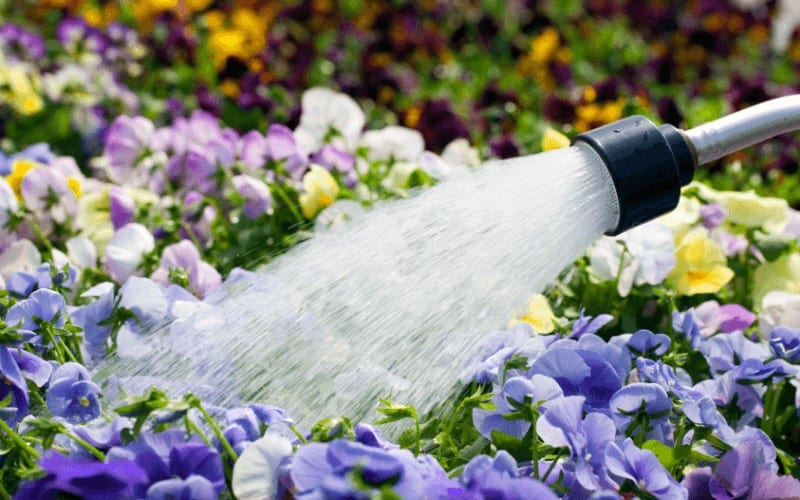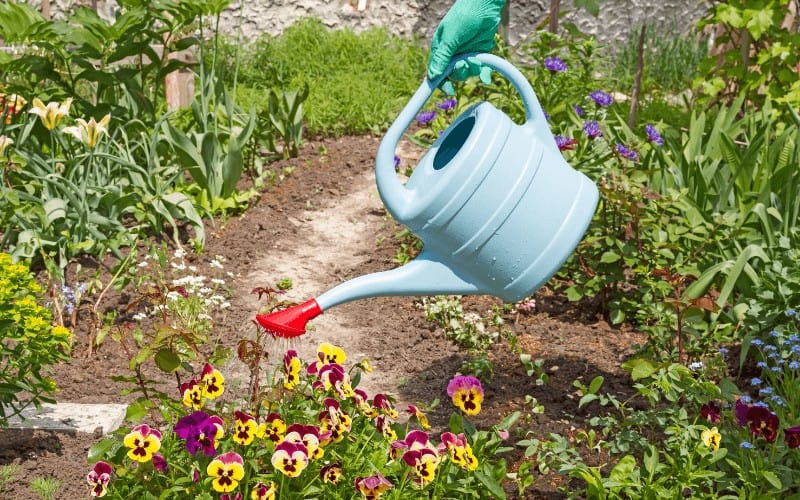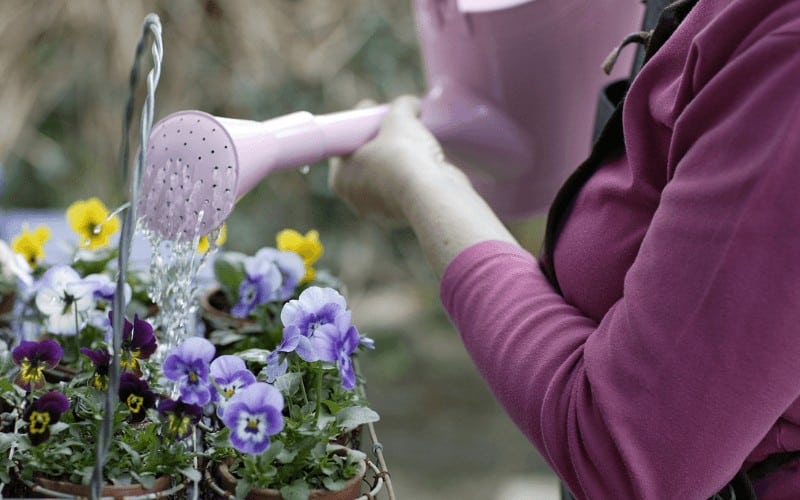Pansies are large-flowered hybrid plants cultivated as garden flowers. They are hybridization from several species in the section Melanium of the Genus Viola, particularly Viola tricolor. No wonder they are known for their multiple attractive colored flowers.
Pansies will thrive when grown on a moist, humus-rich, well-drained soil. Apart from giving attention to the soil type, the amount of water your pansies are exposed to is also a great determinant of the health of this plant.
But how often do you water pansies? How much water do pansies need? First of all, pansies need one inch of water per week when they are actively growing (more on this later).
However, you may not pay relevance to the watering on pansies plant until you start to experience some common problems that resulted from overwatering pansies.
In today's article, we'll be looking at exactly how much water pansies needs.
Let's get started!
Read Also: How to Save a Dying Cherry Tree
Table of Contents
Can Overwatering Cause Problems To Pansies?

Pansies thrive in most soil types, but it must be moist and well-draining. Unfortunately, overwatering pansies leads to cultural disorders, and most gardeners are guilty of this.
There are high chances that excessive water may cause edema in pansies.
Generally, when plants are exposed to excessive water, either once or over an extended period, they get filled up with to the point that they can longer absorb more water from which they receive oxygen and nutrients.
This phenomenon is referred to as edema (abnormal water retention in plants), and it is a common issue with pansies.
Symptoms of overwatering (edema) include dying leaves, plant discoloration, stunted growth, and dieback. The plant essentially suffocates and starves because of a lack of oxygen and eventually dies.
You see why it is crucial to give attention to how much water and how often you should water your pansies?
Signs of Overwatered Pansies
According to Clemson Cooperative Extension, overwatering pansies can result in cultural disorders due to excess moisture. Too much watering may also lead to edema in pansies.
Basically, when a plant is overwatered over an extended period of time or even once, the plant will be filled up with water, preventing it from taking in new water, from which they get nutrients and oxygen.
What Do Overwatered Pansies Look Like?
Initial symptoms of overwatered pansies include:
- Stunted growth
- Dying leaves
- dieback
- Plant discoloration
- Etc.
Most times, the consequence of overwatering plants is usually the plant's death. When your pansies plant is overwatered, it will essentially suffocate and starve as a result of oxygen deficiency plus its state of malnutrition.
Watering Pansies After Planting

Newly planted pansies need to be watered immediately and thoroughly after planting irrespective of where you choose to grow them.
Moving them from their container to your garden soil or pot is strenuous to them; hence you will need to adequately water them and keep the soil moist so they can easily and quickly adapt to their new environment.
This will have to be done manually. It will be better not to allow rain to do this. So you’d want to do this when there are no possible signs of precipitation.
How Often Do You Water Pansies When Already Established?
So how often do you water pansies? Pansies need 1 inch of water weekly when they are actively growing. In places where you have adequate rainfall, you may not need to give much attention to this.
You should be more concerned about making sure that the soil is not waterlogged; otherwise, you will need to provide means for proper drainage.
The idea is to ensure that the soil is only moist and not waterlogged.
For situations where manual watering is inevitable, watering must be done in the morning so that the foliage has the morning sun and the rest of the day to dry.
Precautions to Take While Watering Pansies

Even though you should water your garden, you shouldn’t just do it anyhow. When it comes to pansies, there are some best practices to ensure proper irrigation.
Whether you are using a manual watering system or irrigation system, you must avoid any design or application that initiates an overhead watering. You should instead channel the water directly on the soil.
This helps to avoid standing water on flowers and leaves, thus controlling possible fungal rot diseases.
Improving Soil Drainage For Overwatering Problem
Sometimes even when we try hard to maintain the best practices for our garden, nature may prove adamant. There are scenarios where they may be excessive rain, which may lead to overwatering.
To deal with this situation, you should consider improving your soil properties to enhance drainage.
This is what you should do:
First, Incorporate 2 to 3 inches of compost into the soil bed.
Then apply a 2 to 3-inch layer of organic mulch on the soil surrounding pansies. While doing this, avoid pressing it directly against the plants. An excellent example of organic mulch is “pine needles.”
However, we recommend that you use mulch in small quantities because too much mulch can hold excess moisture, thus defeating the purpose.
Read Also: How Much Water Do Hydrangeas Need?
Frequently Asked Questions
Do pansies need a lot of water?
Pansies need consistent moisture to keep it blossoms soft and lithe; however, roots won't withstand soggy soil.
We suggest you regularly water your pansies plant through the growing period, but let the soil dry a little between watering. Allowing the soil to dry will also help pansies to harden off and withstand cold temperature.
How often do you water pansies in a pot?
How often should I water my potted pansies? For the best growth of your potted pansies, water the plant as often as possible, ensure that the soil is always moist but not soggy.
Do pansies need water everyday?
Like I mentioned earlier, pansies need 1 inch of water per week during their growing season. But you’ll want to reduce watering when rain provides enough irrigation.
Conclusion
Hopefully, you already know how much water pansy needs. How often you water your pansies will determine if your garden will bloom or die.
Pansies can be finicky to grow from seed; it’s a lot easier to just buy an already established plant from a local nursery.
The advantage of this is that you will not have many challenges determining how much water it will need to germinate and pass the tender stage; plus, you’ll get blooms a lot sooner.
Typically, pansies flowering season is from spring to summer in cold climates. When the temperature begins to rise, the flowers die back. However, regular watering will help them flower a bit longer, but don’t expect your pansies to last all season.




